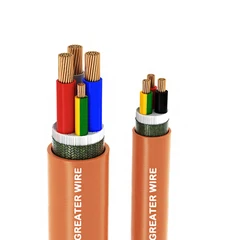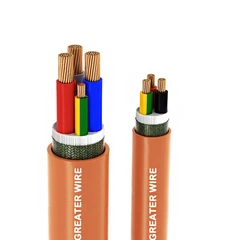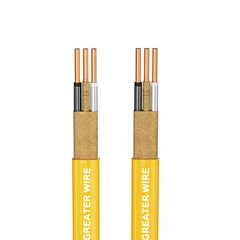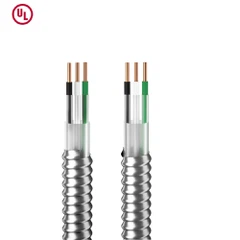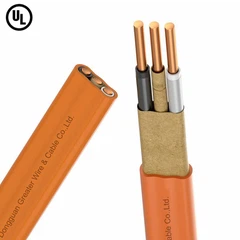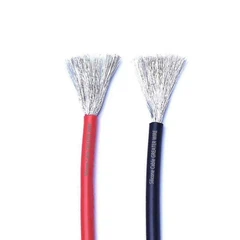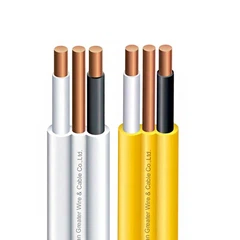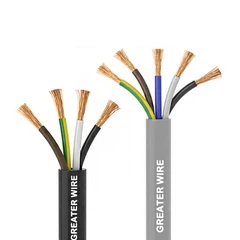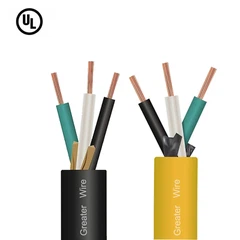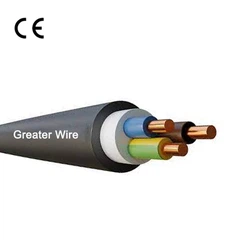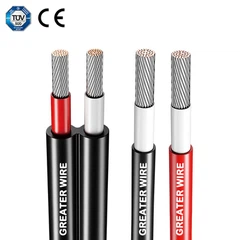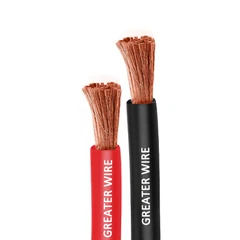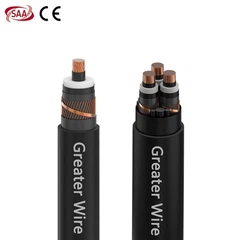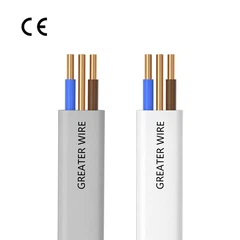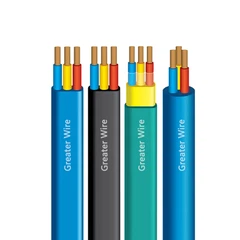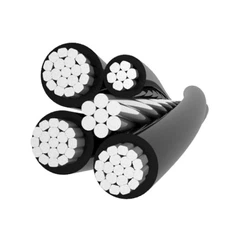1. Definition and meaning of wire name
1. THHN wire (Thermoplastic High Heat-resistant Nylon-coated)
THHN cable is a high-temperature wire with thermoplastic PVC as insulation material and nylon sheath. It is mainly used for wire routing in dry environments and is designed to withstand high temperatures and friction.
Name meaning:
T: Thermoplastic insulation material (such as PVC)
HH: High temperature grade (90°C)
N: Nylon sheath, used to enhance mechanical strength and oil and chemical corrosion resistance
2. THWN wire (Thermoplastic Heat and Water-resistant Nylon-coated)
THWN is a wire similar to wire thhn, but with increased resistance to humid environments, suitable for dry or humid locations.
Name meaning:
T: Thermoplastic insulation
H: Heat resistant
W: Waterproof
N: Nylon sheath
Note: Modern manufactured wires are often marked as THHN/THWN-2 wire at the same time, indicating that they are suitable for a variety of environmental conditions.
3. XHHW wire (Cross-linked High Heat-resistant Water-resistant)
XHHW uses cross-linked polyethylene (XLPE) as the insulation layer. Its insulation performance and heat resistance are better than PVC. It is widely used in commercial buildings, high humidity or industrial environments.
Name meaning:
X: Cross-linked polyethylene insulation (XLPE)
HH: High temperature resistance
W: Waterproof
2. Differences in insulation materials and structures
Material structure of THHN wire and THWN wire
The insulation layer of THHN cable and THWN cable usually uses polyvinyl chloride (PVC), which has good mechanical strength, flame retardancy and low manufacturing cost. The outer layer is covered with a nylon sheath to improve wear resistance and chemical corrosion resistance. The nylon layer can also prevent the cable from being damaged by installation friction to a certain extent.
THHN cable and THWN cable are actually often presented as a "universal dual-label" product, that is, they have the characteristics of both wire thhn and thwn cable. In other words, most THHN wires on the market also have the water resistance of THWN, and are often marked as THHN/THWN wire or THHN/THWN-2 wire
Material structure of XHHW wire
XHHW wire uses cross-linked polyethylene (XLPE) as the insulation layer. This material cross-links polyethylene molecules by physical or chemical means to improve its heat resistance, UV resistance, hydrolysis resistance and other properties. Compared to PVC, XLPE insulation is stronger and more thermally stable, and will not soften at high temperatures like PVC. This makes XHHW wire suitable for more harsh environments, such as industrial or underground pipeline laying.
XHHW wire do not have nylon outer sheaths because XLPE itself has sufficient physical protection properties
| Wire Type | Insulation Material | Features |
| THHN cable | PVC + Nylon | Lower cost, higher flexibility, oil resistance |
| THWN cable | PVC + Nylon | Similar to THHN wire, but can be used in humid environments |
| XHHW cable | Cross-linked polyethylene (XLPE) | Higher insulation resistance, low dielectric constant, better heat resistance |
3. Technical Performance Comparison
| Item | THHN wire | THWN wire | XHHW wire |
| Insulation material | Thermoplastic PVC + Nylon | Thermoplastic PVC + Nylon | XLPE (cross-linked polyethylene) |
| Temperature rating (dry environment) | 90°C | 90°C | 90°C (XHHW wire), 90/105°C (XHHW-2 wire) |
| Temperature rating (humid environment) | Not applicable | 75°C (THWN wire), 90°C (THWN-2 wire) | 75°C (XHHW wire), 90°C (XHHW-2 wire) |
| Voltage rating | 600V | 600V | 600V, some models are 1000V XHHN wire or 2000V XHHW wire |
| Flame retardant performance | General | General | Excellent |
| Oil/corrosion resistance | Excellent (nylon sheath) | Excellent (nylon sheath) | Excellent (XLPE material has inherent corrosion resistance) |
| Flexibility | Excellent | Excellent |
Slightly poor
|
4. Performance comparison
1.Heat resistance
Due to the natural thermal stability of XLPE materials, XHHW cable has better long-term heat resistance than THHNcable and THWN wire, and is especially suitable for hot climates and high-temperature factories.
2.Water resistance
Both THWN cable and XHHW cable have good moisture and water resistance. However, XHHW cable performs better in terms of long-term immersion in water or underground laying.
3.Electrical insulation performance
XLPE has a higher dielectric strength than PVC, so XHHW wire has better insulation effect in high-voltage environments, which helps reduce the risk of leakage.
4.Cost and availability
THHN wire and THWN wire are the first choice for common building wires due to their mature production process, wide market and low cost. XHHW cable is slightly more expensive due to its higher material and process costs, and is usually used in more severe industrial environments.
5. Certification standards and regulatory basis
All three types of wires must meet the relevant provisions of the National Electrical Code (NEC) of the United States and obtain UL certification.
THHN wire: Meets UL 83, NEC Article 310
THWN wire: Also based on UL 83 standard
XHHW wire: Based on UL 44 standard, meets the relevant provisions of NEC for high heat-resistant and moisture-resistant wires
In addition, all three can meet the requirements of international environmental protection and electrical safety certifications such as RoHS and CSA, depending on the specific manufacturer.
6. Application fields and typical use scenarios
THHN wire application
THHN is widely used in the following environments:
Indoor commercial building wiring
Power distribution system in dry pipes
Internal wiring of panels, switch boxes, and distribution boards
Inside industrial control cabinets
Not suitable for projects that require long-term immersion in water or exposure to humid environments.
THWN wire application
Applicable to:
Outdoor building wiring
Underground pipe laying
Humid or corrosive environments
Water treatment plants, cold storage areas and other areas prone to condensation
THWN is an extension of THHN and has stronger adaptability.
XHHW wire application
Due to its good temperature resistance, insulation performance and weather resistance, XHHW can be used for:
Industrial power transmission
Underground cable system
Power supply for heavy machinery and equipment
Large-scale engineering projects in high humidity and heat areas
Power stations, substations and outdoor electrical installations
Especially suitable for wiring that is exposed to sunlight, moisture or corrosive gas environments for a long time.

